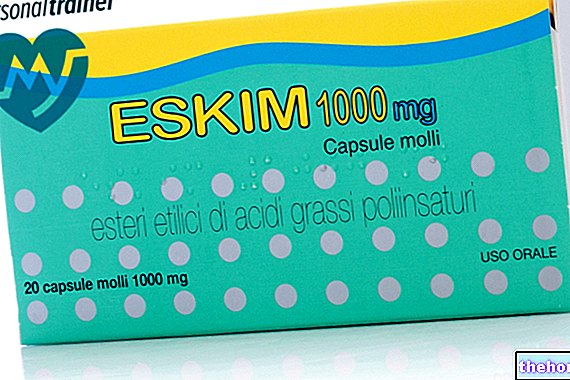Active ingredients: Acetorphane
Tiorfix 10 mg granules for oral suspension
Tiorfix package inserts are available for pack sizes:- Tiorfix 10 mg granules for oral suspension
- Tiorfix 30 mg granules for oral suspension
- Tiorfix 100 mg capsules
Indications Why is Tiorfix used? What is it for?
Tiorfix is a medicine for the treatment of diarrhea.
Tiorfix is used for the symptomatic treatment of acute diarrhea in children over three months of age. It must be associated with the intake of abundant fluids and with the usual dietary measures, when these measures alone are not sufficiently effective for the control of diarrhea, and when causal treatment is not possible.
Racecadotril can be given as a complementary treatment when causal treatment is possible.
Contraindications When Tiorfix should not be used
Do not give Tiorfix
- If the child is allergic (hypersensitive) to racecadotril or any of the other ingredients of Tiorfix.
- If your doctor has told you that your child is intolerant to some sugars, ask your doctor before giving Tiorfix to your child.
Precautions for use What you need to know before taking Tiorfix
Talk to your doctor or pharmacist before giving Tiorfix to your child.
Tell your doctor if:
- Your baby is less than three months old,
- Find blood or pus in the baby's stool and the baby has a fever. The cause of the diarrhea can be a "bacterial infection that needs to be treated by the doctor.
- Your child has chronic diarrhea or diarrhea caused by antibiotics,
- Your child has kidney disease or impaired liver function,
- Your child suffers from prolonged or uncontrolled vomiting,
- Your child has diabetes (see "Important information about some of the ingredients of Tiorfix").
Interactions Which drugs or foods can modify the effect of Tiorfix
Tell your doctor if your child is taking or has recently taken any other medicines, including medicines obtained without a prescription.
Warnings It is important to know that:
Pregnancy, breastfeeding and fertility
The use of Tiorfix is not recommended if you are pregnant or breastfeeding. Talk to your doctor or pharmacist before taking any medicine.
Driving and using machines
Tiorfix has no or negligible influence on the ability to drive or use machines.
Important information about some of the ingredients of Tiorfix
Tiorfix contains approximately 1 g of sucrose per sachet.
If your doctor has told you that your baby is intolerant to some sugars, contact him before giving Tiorfix to your baby.
In infants with diabetes, if your doctor has prescribed your baby more than 5 sachets of Tiorfix per day (equivalent to more than 5 g of sucrose), this should be taken into account when calculating the baby's total daily sugar intake.
Dose, Method and Time of Administration How to use Tiorfix: Posology
Tiorfix is supplied in the form of granules.
The granules must be added to food or dissolved in a glass of water or in a baby bottle, mixed well and given immediately.
The recommended daily dose depends on the child's weight: 1.5 mg / kg per dose (equal to 1 or 2 sachets), three times a day at regular intervals.
In infants weighing less than 9 kg: one sachet per dose.
In infants from 9 kg to 13 kg: two sachets per dose.
Always give Tiorfix to your child exactly as your doctor has told you. If in doubt, consult your doctor or pharmacist.
Your doctor will tell you how long to continue treatment with Tiorfix. It should be continued until the baby has produced two normal stools, no later than 7 days.
To compensate for fluid loss due to diarrhea, this medicine should be used in conjunction with "adequate fluid and salt (electrolyte) supplementation. The best fluid and salt supplement is achieved with a so-called oral rehydration solution (if in any doubt, please contact us). ask your doctor or pharmacist).
Overdose What to do if you have taken too much Tiorfix
If you take more Tiorfix than you should
If your child has taken more Tiorfix than he should, contact your doctor or pharmacist immediately.
If you forget to take Tiorfix
Do not give your child a double dose to make up for a forgotten dose. Continue the treatment as normal.
Side Effects What are the side effects of Tiorfix
Like all medicines, this medicine can cause side effects, although not everybody gets them.
The following uncommon side effects have been reported (they affect 1 to 10 users in 1000): tonsillitis (inflammation of the amygdales), rash and erythema (redness of the skin).
Other side effects (the frequency of which cannot be estimated from the available data) are: erythema multiforme (pink lesions in the extremities and inside the mouth), inflammation of the tongue, inflammation of the face, inflammation of the lips, inflammation of the eyelids, angioedema (subcutaneous inflammation in various parts of the body), urticaria, erythema nodosum ( inflammation in the form of a lump under the skin), papular rash (skin rash with small, hard, lumpy lesions), prurigo (itchy skin lesions), itching (general itchy sensation).
Stop giving Tiorfix to your child straight away and contact your doctor immediately if your child shows symptoms of angioedema, such as:
- swollen face, tongue or pharynx
- difficulty swallowing
- hives and difficulty in breathing
If any of the side effects gets serious or if you notice any side effects not listed in this leaflet, please tell your doctor or pharmacist.
Expiry and Retention
Keep out of the reach and sight of children.
Do not use Tiorfix after the expiry date which is stated on the secondary packaging after "EXP". The expiry date refers to the last day of the month.
Medicines should not be disposed of via wastewater or household waste. Ask your pharmacist how to throw away medicines you no longer use. This will help protect the environment.
This medicine does not require any special storage conditions.
Read the package leaflet before use.
What Tiorfix contains
The active ingredient is racecadotril. Each sachet contains 10 mg of racecadotril.
The other ingredients are:
Sucrose,
Anhydrous colloidal silica,
Polyacrylate dispersion 30%,
Aroma of apricot
What Tiorfix looks like and contents of the pack
Tiorfix is presented in the form of granules for oral suspension contained in sachets.
Each pack contains 10, 16, 20, 30, 50, or 100 sachets (pack of 100 sachets for hospital use only).
Not all pack sizes may be marketed
Source Package Leaflet: AIFA (Italian Medicines Agency). Content published in January 2016. The information present may not be up-to-date.
To have access to the most up-to-date version, it is advisable to access the AIFA (Italian Medicines Agency) website. Disclaimer and useful information.
01.0 NAME OF THE MEDICINAL PRODUCT
TIORFIX 10 MG GRANULES FOR ORAL SUSPENSION
02.0 QUALITATIVE AND QUANTITATIVE COMPOSITION
Each sachet contains 10 mg of racecadotril.
Each sachet contains 966.5 mg of sucrose.
For the full list of excipients, see section 6.1.
03.0 PHARMACEUTICAL FORM
Granules for oral suspension.
White powder with a characteristic apricot smell.
04.0 CLINICAL INFORMATION
04.1 Therapeutic indications
Complementary symptomatic treatment of acute diarrhea in infants (over 3 months) and infants, in association with oral rehydration and usual supportive measures, when such measures alone are insufficient to control the clinical condition, and when the causal treatment is not possible.
If causal treatment is possible, racecadotril can be given as a complementary treatment.
04.2 Posology and method of administration
TIORFIX 10 mg is administered orally, together with oral rehydration solutions (see section 4.4).
TIORFIX 10 mg is intended for children of weight
The recommended dose is determined based on body weight: 1.5 mg / kg per dose (equal to 1 or 2 sachets), three times a day at regular intervals.
In infants weighing less than 9 kg: one 10 mg sachet 3 times a day.
In infants from 9 kg to 13 kg: 2 sachets of 10 mg 3 times a day.
The duration of treatment in the clinical trials in children was 5 days. Treatment should be continued until two normal faecal discharges are produced. Treatment should not exceed 7 days. Long-term treatment with racecadotril is not recommended.
No clinical studies are available in infants less than 3 months of age.
Special populations:
No studies are available in infants or children with renal or hepatic impairment (see section 4.4).
Caution is recommended in patients with hepatic or renal impairment.
The granules can be added to food, dissolved in a glass of water or in a baby bottle, mixed well and given immediately.
04.3 Contraindications
Hypersensitivity to the active substances or to any of the excipients listed in section 6.1.
This medicinal product contains sucrose. Patients with rare hereditary problems of fructose intolerance, glucose-galactose malabsorption or sucrase-isomaltase insufficiency should not take this medicine.
04.4 Special warnings and appropriate precautions for use
Administration of TIORFIX 10 mg does not change the usual rehydration regimens. It is essential that the child drinks plenty of fluids.
In case of severe or prolonged diarrhea with severe vomiting or loss of appetite, intravenous rehydration should be considered.
The presence of bloody or purulent stools and fever may indicate the presence of invasive bacteria responsible for diarrhea or the presence of other serious conditions. Additionally, Racecadotril has not been tested for antibiotic-associated diarrhea. Therefore, Racecadotril should not be administered in these conditions.
There are insufficient studies in the treatment of chronic diarrhea with this product.
For patients with diabetes it should be considered that each sachet contains 0.966 g of sucrose.
If the amount of sucrose (source of glucose and fructose) present in the daily dose of TIORFIX 10 mg exceeds 5 g per day, this must be taken into account for the daily sugar dosage.
The product should not be administered to infants under 3 months of age due to the absence of clinical studies in this population.
The product should not be administered to children with renal or hepatic impairment, regardless of the level of severity, due to a lack of information on this patient population.
Due to the possible lower bioavailability, the product should not be administered in case of prolonged or uncontrolled vomiting.
04.5 Interactions with other medicinal products and other forms of interaction
No interactions with other active ingredients in man have been described to date.
In humans, concomitant treatment with racecadotril and loperamide or nifuroxazide does not change the kinetics of racecadotril.
04.6 Pregnancy and breastfeeding
Fertility
Fertility studies conducted with racecadotril in Sprague-Dawley rats demonstrate no impact on fertility.
Pregnancy
There are no adequate data from the use of racecadotril in pregnant women. Animal studies have not shown direct or indirect harmful effects with respect to pregnancy, fertility, embryonic fetal development, parturition or postnatal development. However, due to the absence of any. specific clinical studies available, racecadotril should not be administered to pregnant women.
Feeding time
Due to the lack of information on the secretion of racecadotril in human milk, this medicinal product should not be administered to breastfeeding women.
04.7 Effects on ability to drive and use machines
Not relevant.
Racecadotril has no or negligible influence on the ability to drive or use machines.
04.8 Undesirable effects
Data are available from clinical trials involving 860 pediatric patients with acute diarrhea treated with racecadotril and 441 treated with placebo.
The undesirable effects listed below occurred more frequently with racecadotril than with placebo or were reported during post-marketing surveillance. The frequency of undesirable effects is defined using the following convention: very common (≥ 1/10), common (≥ 1/100 to
Infections and infestations
Uncommon: tonsillitis.
Skin and subcutaneous tissue disorders
Uncommon: rash, erythema.
Not known: erythema multiforme, lingual edema, face edema, lip edema, ocular edema, angioedema, urticaria, erythema nodosum, papular rash, prurigo, pruritus.
04.9 Overdose
No cases of overdose have been reported. Single doses greater than 2 g, equivalent to 20 times the therapeutic dose, have been administered in adults and no harmful effects have been reported.
05.0 PHARMACOLOGICAL PROPERTIES
05.1 Pharmacodynamic properties
Pharmacotherapeutic group: other antidiarrheals.
ATC code: A07XA04.
Racecadotril is a prodrug that must be hydrolyzed into its active metabolite thiorphan, which is an inhibitor of encephalinase, a cell membrane peptidase enzyme located in various tissues, particularly in the small intestine epithelium. This enzyme contributes to the digestion of peptides. exogenous and the degradation of endogenous peptides, such as enkephalins Racecadotril protects enkephalins from enzymatic degradation by prolonging their action at the level of encephalinergic synapses in the small intestine and reducing hypersecretion.
Racecadotril is a pure intestinal antisecretory active ingredient. It determines a reduction of intestinal hypersecretion of water and electrolytes induced by cholera toxin or by the inflammatory state, and has no effect on the basal secretory activity. Racecadotril has a rapid antidiarrheal activity, without altering the intestinal transit time.
In two clinical trials in children, racecadotril reduced fecal weight by 40% and 46%, respectively, in the first 48 hours. A significant reduction in the duration of diarrhea and the need for rehydration was also observed.
A meta-analysis (9 randomized clinical trials of racecadotril versus placebo, in addition to oral rehydration solution) collected data on individual patients from 1384 boys and girls with acute diarrhea of varying severity and treated as inpatient or outpatient. The mean age was 12 months (interquartile range: 6 to 39 months). A total of 714 patients were less than 1 year old and 670 patients were 1 year or older. patients between studies ranged from 7.4 kg to 12.2 kg. The mean duration of diarrhea after inclusion was 2.81 days for the placebo group and 1.75 days for the racecadotril group. The proportion of hospitalized patients was higher in the racecadotril groups compared to placebo [HR (Hazard Ratio): 2.04; 95% CI: 1.85 to 2.32; p 1 year) (HR: 2.16; 95% CI: 1.83 to 2.57; p
Racecadotril does not cause abdominal distension. During its clinical development, racecadotril caused the onset of secondary constipation in a percentage of patients comparable to that seen with the administration of placebo. In case of oral administration, the activity is carried out exclusively at the peripheral level, without effects on central nervous system.
A randomized cross-over study demonstrated that racecadotril 100 mg capsules at the therapeutic dose (1 capsule) or at a supra-therapeutic dose (4 capsules) did not induce QT / QTc interval prolongation in 56 healthy volunteers (as opposed to moxifloxacin, used as a control).
05.2 Pharmacokinetic properties
Absorption
Racecadotril is rapidly absorbed following oral administration.
Distribution
In plasma, after an oral dose of C-14 labeled racecadotril, the measured radiocarbon exposure was many degrees of magnitude higher than in blood cells and 3 times higher than in whole blood. The drug therefore did not bind to blood cells at significant levels. Radiocarbon distribution to other body tissues was moderate, as indicated by the mean apparent volume of distribution in plasma of 66.4 kg.
Ninety percent of the active metabolite of racecadotril (thiorfan = (RS) -N - (1-oxo -2 - (mercaptomethyl) -3 -phenylpropyl) glycine) is bound to plasma proteins, mainly albumin.
The duration and extent of the effect of racecadotril are dose-dependent. Peak plasma encephalinase inhibition is achieved in approximately 2 hours and corresponds to 90% inhibition with a dose of 1.5 mg / kg. The duration of plasma encephalinase inhibition is approximately 8 hours.
Metabolism
The half-life of racecadotril, calculated as plasma encephalinase inhibition, is approximately 3 hours.
Racecadotril is rapidly hydrolyzed into thiorphan (RS) -N - (1 -oxy -2 - (mercaptomethyl) -3 -phenylpropyl) glycine, the active metabolite, in turn transformed into inactive metabolites identified as S-methylthiorphan sulfoxide, thiorphan S -methyl, propionic acid 2-methanosulfinylmethyl and proprionic acid 2 -methylsulfanylmethyl, all formed with a systemic exposure to the parent drug greater than 10%.
Other minor metabolites were also detected and quantified in urine and faeces.
The data in vitro indicate that racecadotril / thiorfan and the four major inactive metabolites do not inhibit the major CYP enzyme isoforms 3A4, 2D6, 2C9, 1A2 and 2C19 at clinically relevant levels.
The data in vitro indicate that racecadotril / thiorfan and the four major inactive metabolites do not induce CYP enzyme isoforms (family 3A, 2A6, 2B6, 2C9 / 2C19, family 1A, 2E1) and UGT conjugated enzymes at clinically relevant levels.
In the pediatric population, the pharmacokinetic results are similar to those in the adult population, with Cmax reached 2 hours and 30 minutes after dosing. There is no accumulation following multiple doses administered every 8 hours for 7 days.
Excretion
Racecadotril is eliminated in the form of active and inactive metabolites. Excretion occurs mainly via the kidney (81.4%) and, to a much lesser extent, via the faecal route (approximately 8%). The pulmonary route is not significant (less than 1% of the dose).
05.3 Preclinical safety data
4-week chronic toxicity studies in monkeys and dogs, adjusted for duration of treatment in humans, indicate no effects at doses up to 1250 mg / kg / day and 200 mg / kg, corresponding to safety margins of 625 and 62 (with respect to "man). Racecadotril was not immunotoxic in mice treated with racecadotril for up to 1 month. Longer (1 year) exposures in monkeys showed generalized infections and reduced antibody responses with vaccination at a dose of 500 mg / kg / day and no infection / immunosuppression at a dose of 120 mg / kg / day. Likewise, some infection / immune parameters varied in the dog treated with 200 mg / kg / day for 26 weeks. Clinical relevance is unknown, see section 4.8.
No mutagenic or clastogenic effects of racecadotril were found in standard tests in vitro And in vivo.
Carcinogenicity tests have not been performed with racecadotril as the drug is intended for short-term treatment.
Reproductive and developmental toxicity (studies on fertility and early embryonic development, prenatal and postnatal development including maternal function, embryonic-fetal development) did not reveal specific effects for racecadotril.
A toxicity study in juvenile rats revealed no significant effects of racecadotril up to a dose of 160 mg / kg / day, which is 35 times higher than the usual pediatric regimen (i.e. 4.5 mg / kg / day).
Despite the immaturity of renal function in infants less than 1 year of age, higher exposure levels are not expected in these individuals.
Other preclinical effects (eg severe anemia, likely aplastic, increased diuresis, ketonuria, diarrhea) were observed only in cases of exposure considered sufficiently in excess of the maximum human exposure expected. The clinical relevance is unknown.
Other safety pharmacological studies did not reveal any harmful effects of racecadotril on the central nervous system and on cardiovascular and respiratory functions.
In animals, racecadotril caused an increase in the effects of butylscopolamine on intestinal transit and on the anticonvulsant effects of phenytoin.
06.0 PHARMACEUTICAL INFORMATION
06.1 Excipients
Sucrose
Anhydrous colloidal silica
Polyacrylate dispersion 30%
Aroma of apricot.
06.2 Incompatibility
Not relevant.
06.3 Period of validity
2 years.
06.4 Special precautions for storage
This medicine does not require any special storage conditions.
06.5 Nature of the immediate packaging and contents of the package
Heat-sealed paper / aluminum / polyethylene bags.
Packs of 10, 16, 20, 30, 50 and 100 sachets (100 sachets for hospital use only).
Not all pack sizes may be marketed.
06.6 Instructions for use and handling
No special instructions.
07.0 MARKETING AUTHORIZATION HOLDER
BIOPROJET EUROPE LTD
29 Earlsfort Terrace,
2, Dublin
Ireland
08.0 MARKETING AUTHORIZATION NUMBER
AIC n. 037518115 / M "10 mg granules for oral suspension" 10 sachets in paper / Al / PE - early childhood
AIC n. 037518127 / M "10 mg granules for oral suspension" 16 paper / Al / PE sachets - early childhood 20
AIC n. 037518139 / M "10 mg granules for oral suspension" 20 paper / Al / PE sachets - early childhood 30
AIC n. 037518141 / M "10 mg granules for oral suspension" 30 sachets in paper / Al / PE - early childhood 50
AIC n. 037518154 / M "10 mg granules for oral suspension" 50 sachets in paper / Al / PE - early childhood
AIC n. 037518166 / M "10 mg granules for oral suspension" 100 sachets in paper / Al / PE - early childhood
09.0 DATE OF FIRST AUTHORIZATION OR RENEWAL OF THE AUTHORIZATION
/
10.0 DATE OF REVISION OF THE TEXT
08/03/2013




























